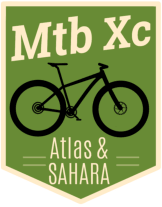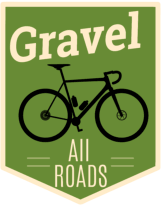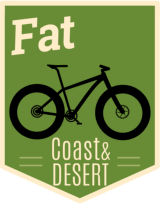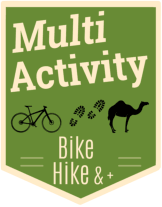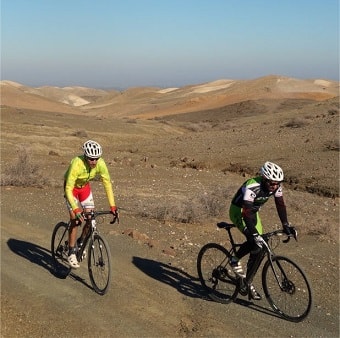Gravel cycling in Morocco offers an incredible blend of adventure, culture, and stunning landscapes. From rugged mountains to arid deserts and ancient cities, Morocco provides a unique backdrop for gravel cycling enthusiasts. Here are some highlights and key points to consider if you're thinking about gravel cycling in Morocco:
Gravel Cycling Regions in Morocco
- Atlas Mountains: The High Atlas and Middle Atlas regions offer challenging climbs, scenic valleys, and remote Berber villages. The trails vary from smooth gravel paths to rocky, technical descents. The Tizi n’Ait Hamd Pass, which is the highest in North Africa, or Tizi n’Tichka are one of the popular routes for cyclists looking for both adventure and a test of endurance.
- Anti-Atlas Mountains: South of the High Atlas, the Anti-Atlas is known for its striking landscapes, unique rock formations, and palm-filled valleys. It's less developed and offers more solitude than the High Atlas, with gravel routes that wind through small villages and open plains.
- Draa Valley and the Sahara Desert: Starting in the city of Ouarzazate, the Draa Valley stretches southward into the Sahara. This area combines desert landscapes with palm oases and towering kasbahs (traditional forts). Gravel trails here can lead to vast expanses of rocky desert paths or even sand dunes, providing a true sense of adventure and remoteness.
- Coastal Regions: The Atlantic coastline between Agadir and Essaouira features rugged cliffs, hidden beaches, and coastal trails. The routes here often combine gravel and dirt tracks, passing through small fishing villages and offering dramatic ocean views.
Best Time for Gravel Cycling in Morocco
- Spring (March to May) and Fall (September to November): These are the most favorable seasons for gravel cycling in Morocco. The weather is generally mild, with comfortable daytime temperatures in most regions. The Atlas Mountains and desert areas can still be quite cold at night, so layers are essential.
- Winter (December to February): The winter months are suitable for cycling in the desert areas, where temperatures remain more moderate. However, higher altitudes in the Atlas Mountains can be very cold, with snow possible on higher passes.
- Summer (June to August): The summer months can be very hot, especially in desert regions. Cycling during this time is not recommended unless you stay in the cooler high-altitude areas of the Atlas Mountains.
What to Expect on Moroccan Gravel Routes
- Terrain Variety: Gravel cycling in Morocco involves a mix of terrains, from well-maintained gravel roads to rugged, rocky paths, sandy tracks, and even some tarmac sections. Be prepared for technical riding and a variety of surfaces.
- Remote Landscapes: Many routes take you through remote areas, far from cities and major towns. Our experienced team will make sure you have enough water, food, and technical assistance.
Cultural Experiences: Our Gravel tours offer rich cultural experiences. Gravel routes often pass through traditional Berber villages, where you can interact with locals, enjoy traditional food, and even stay in guesthouses or local riads (traditional Moroccan homes converted into hotels).
Events and Races
Morocco has a growing gravel cycling community, and there are a few events that cater to gravel cyclists, such as:
- Atlas Mountain Race: Although primarily a bikepacking event, this race features a significant amount of gravel and off-road riding through some of Morocco's most challenging terrain.
- Raid Gravel Morocco: A multi-day gravel race that combines competition with a cultural adventure, taking riders through some of the country's most beautiful landscapes.
- BikingmMan X: A one stage unassisted ultracycling race that will take you to the heart of Morocco, a land of light and wild beauty.



